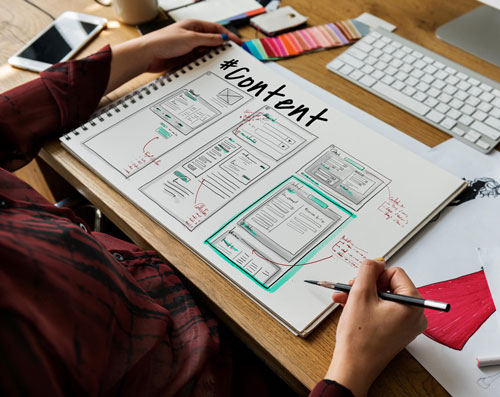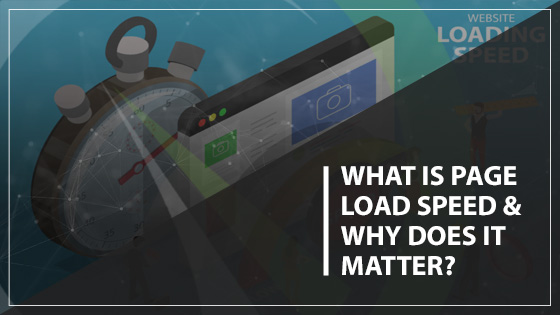The first and most important task for your website is to capture attention. It’s estimated that visitors spend only 10-20 seconds deciding whether your website has valuable content. If you do not grab their attention, visitors will click away—fast.
For this reason, it’s important to understand that the overall structure of your web design has a profound impact on visitor engagement and traffic.
For a website to be listed prominently in search results, it needs to attract and keep visitors. This is why search engine algorithms put a lot of importance on something called “dwell time,” which refers to the amount of time that visitors interact with website content.
Dwell time tells search engines a lot about the quality and value of a site. For example, if people routinely click back or “bounce” to the search results, it tells search engines that the site lacks value. On the other hand, if a site routinely engages visitors who spend a good deal of time processing the content, algorithms understand that the site’s content is relevant and needs to be elevated in the search results.
Website Visuals Do the Heavy Lifting
We live in a highly visual culture. When people scroll through social media, they are mainly engaging in visual activity. They may read the text, but that usually comes after a graphic design element, image, or video sparks some interest.

So, when designing your own website, it’s vital to ask yourself if the web design is visually appealing. Does it spark interest? Does it grab your attention? Does it make you want to click the links and investigate?
Visitors will make snap judgments about your site based on the layout and visual elements.
Here are a few tips to maximize your site’s visual appeal.
- Simplicity: Web designs that have a simple layout get more traffic. If there are too many choices or too many links to click, visitors can feel overwhelmed. They will eventually disconnect. People visiting your website want to quickly navigate to the information they’re looking for, so it’s wise to avoid a busy homepage with loads of distracting elements like wild autoplay videos, music, banner ads, and popups.
- Images and Video: Webpages with images and videos receive more engagement, so it’s important to include relevant visuals that reinforce and strengthen your text. While high-quality images are useful, you want to keep the file size small when you upload. Large images can slow down your load time and cause users to disconnect.
- Fonts and Style: Having a consistent and complementary style throughout a website demonstrates professionalism, which gives the content authority and increases engagement and dwell time. Select your page layouts and fonts carefully, and make sure they complement the subject matter well. Using the wrong font can make you sound overly serious or too amateur.
Content Really Is King
The most important factor that determines visitor engagement is content quality. Ultimately, if a site presents excellent material, people will engage with it, naturally boosting the website’s rank in search results.
As you develop your content, keep the following in mind.
- Authority: Quality web content provides visitors with clear, authoritative information. If people feel the content comes from an expert, they are more likely to trust it and engage with it.
- Content Length: Search engines like Google favor thorough, detailed content. Long content usually better, but that changes with each industry and topic. Never write extra, unnecessary content solely to meet the word count since that only lowers the quality.
- Grammar: If web content is littered with errors, it loses credibility. Proofreading for correct spelling and grammar is essential because people associate poor grammar with low-quality content. Thankfully, there are word processing tools and web apps like Grammarly that can help catch errors.

Technical Issues That Drive Traffic Away
In addition to content, there are technical aspects of web design that can affect your traffic. If you fail to address these issues, visitors are more likely to click to another site.
Here are the top technical suggestions for improving user experience and retaining web traffic:
- Loading Time: The load time of a website matters because slow-loading websites have a high bounce rate. People are only willing to wait 2-5 seconds for a page to load. Choosing a quality web host and optimizing images are two simple ways to improve the load time of your website.
- Mobile-Friendly: Most Google searches occur on smartphones, so you must make sure that your website performs on all types of devices—mobile phones, tablets, and desktop computers.
- SSL Certificate: One of the best ways to demonstrate quality to visitors and provide peace of mind is by getting an SSL certificate. Most browsers warn users when they navigate to a site without an SSL, which can spook them into clicking away.
As competition becomes more intense online, it will be increasingly important to structure your website for maximum engagement. You can’t afford to lose any traffic due to poor web design.
Let the experts at Gauge Digital Media design a site that attracts and keeps traffic! Call us today at (410) 376-7709.







